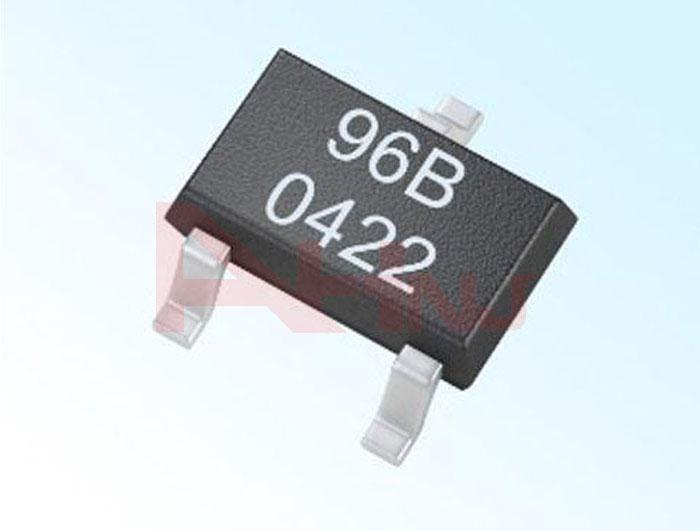Why is Hall IC Made of Semiconductors Rather Than Metallic Materials?
The Hall effect is a magnetic sensitivity effect. Generally, a magnetic field with a magnetic induction intensity of B is applied in the length X direction of a semiconductor wafer, and an electromotive force UH is generated in the width Y direction. This phenomenon is called the Hall effect. UH is called the Hall potential, and its size can be expressed as: UH = RH / d * IC * B (1) In the formula, RH is called the Hall coefficient and is determined by the properties of the conductor material; d is the thickness of the conductor material, IC Is the current intensity, and B is the magnetic induction intensity. Set RH / d = K, then formula (1) can be written as: UH = K * IC * B (2) It can be seen that the Hall voltage is proportional to the product of the control current and the magnetic induction intensity. K is called the larger the Hall coefficient value , The higher the sensitivity; the smaller the component thickness, the greater the output voltage. Hall coefficient: In the formula K = 1 / (n * q), n is the carrier density. Generally, the carrier density in metals is very large, so the Hall coefficient of metal materials is very small, and the Hall effect is not obvious; The density of carriers in semiconductors is much smaller than that of metals, so the Hall coefficient of semiconductors is much larger than that of metals, which can produce a larger Hall effect. Therefore, Hall elements do not use metal materials but semiconductors.
Hall IC can be made from a variety of semiconductor materials, such as Ge, Si, InSb, GaAs, InAs, InAsP, and multi-layer semiconductor heterostructure quantum well materials. The Hall element is a magnetic sensor based on the Hall effect. They can be used to detect magnetic fields and their changes, and can be used in a variety of magnetic field-related applications. Hall elements have many advantages. They have a solid structure, small size, light weight, long life, easy installation, low power consumption, high frequency (up to 1MHZ), vibration resistance, and are not afraid of dust, oil, water vapor, and salt spray. Contamination or corrosion.
Linear Hall IC
Linear Hall IC has high accuracy and good linearity; Hall switch devices have no contacts, no wear, clear output waveforms, no jitter, no bounce, and high position repeatability (up to μm level). Hall devices with various compensation and protection measures have a wide operating temperature range. The so-called Hall effect refers to a physical phenomenon in which a lateral potential difference occurs when a magnetic field acts on a carrier in a current-carrying metal conductor or a semiconductor. The Hall effect of metals was discovered by American physicist Hall in 1879. When a current is passed through the metal foil, if a magnetic field is applied in a direction perpendicular to the current, a lateral potential difference will occur on both sides of the metal foil. The Hall effect in semiconductors is more pronounced than in metal foils, and ferromagnetic metals will exhibit extremely strong Hall effects below the Curie temperature. The Hall effect can be used to design a variety of sensors.
We are Hall Sensor Manufacturer, welcome to consult.

评论
发表评论